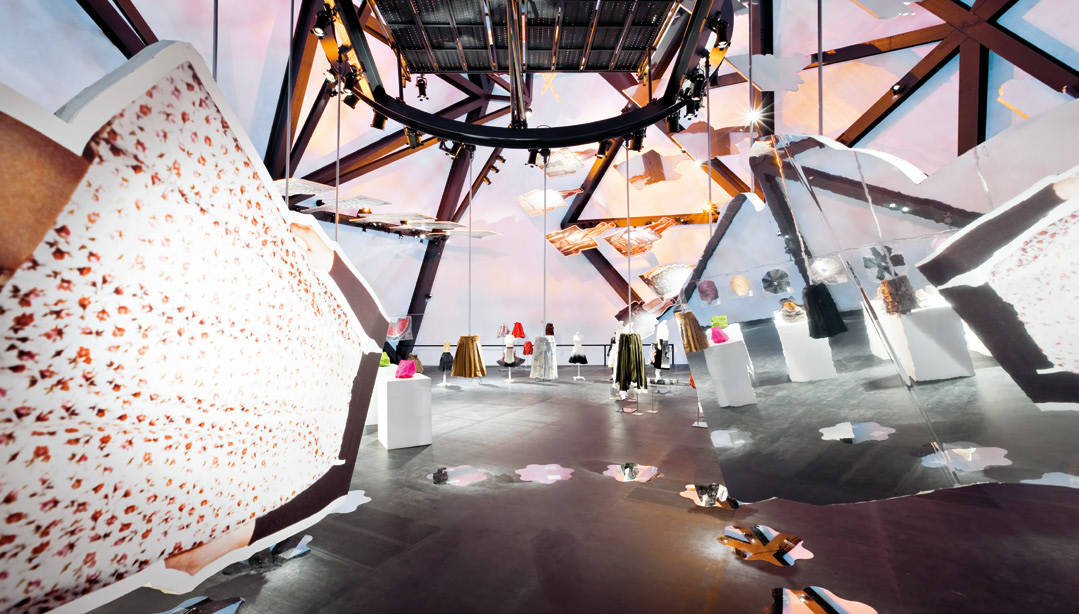architect: AMO*OMA
location: Seoul, South Korea
La forma del Prada Transformer trae ispirazione da un tetraedro che ruotato sui vari lati rende possibile un utilizzo differenziato. I programmi previsti prevedono la Prada Waist down Exhibition, una mostra d’arte che ospiterà i più noti artisti a livello mondiale, nonché un festival cinematorgrafico. Mentre per l’evento di chiusura del padiglione è stato organizzato uno spettacolo interamente dedicato alla moda riservato a 500 invitati.

Per consentire di ospitare contemporaneamente eventi di moda, arte e cinema alcune gru ruotano la struttura e poggiano il padiglione sui quatto differenti lati, creando così le diverse configurazioni. Ciascuno dei quattro programmi agisce su un’unica struttura in acciaio foggiato in quattro diverse figure geometriche: un esagono, una croce, un rettangolo e un cerchio. Così nel corso nella mostra i pavimenti diventano pareti e le pareti soffitto. La struttura è avvolta in una membrana traslucida con schermi LED incorporati che mostreranno immagini della trasformazione e inserzioni pubblicitarie. Il Transformer è stato collocato a Seoul accanto al palazzo Kyounghee, risalente al XVI secolo, creando un forte contrasto tra la sua modernità e lo storico contesto cittadino.
project: Asian Pavilion for Prada
location: Seoul, South Korea
team partners: Rem Koolhaas, Ellen van Loon
associates: Kunle Adeyemi, Kees van Casteren, Chris van Duijn
design architect: Alexander Reichert
collaborators: Hyoeun Kim, Ye Rin Kang, Vincent Mc Ilduff, David Moon, Mariano Sagasta, Claudia Romao, Eva Dietrich, Alex de Jong, Wayne Congar, Miguel Huelga de la Fuente, Gustavo Paternina-Soberon, Nam Joo Kim
concept design: 2008
completion: April 2009
photo by Sergio Pirrone
In the late nineties, while working on the design for the new headquarters for Universal (currently Vivendi), OMA was first exposed to the full pace of change that engulfed the world of media and with it the increasing importance of the virtual domain. It led Rem Koolhaas and the Office for Metropolitan Architecture (OMA) to create a new company, AMO, exclusively dedicated to the investigation and performance in this realm. While OMA remains dedicated to the realization of architectural projects, AMO applies architectural thinking in its pure form to questions of organization, identity, culture and program, and define ways - from the conceptual to the operative - to address the full potential of the contemporary condition. AMO is now a research office that embodies both the professional experience of OMA and knowledge generated by the Harvard Design School Project on the City. Supervised by Rem Koolhaas and Reinier de Graaf and with a core staff based in Rotterdam, New York and Cambridge, Massachusetts, AMO has consolidated a series of existing and new professional collaborations and cross-disciplinary partnerships. AMO’s work is to develop new models of thinking about systems and to create clearly considered blueprints for change.





















